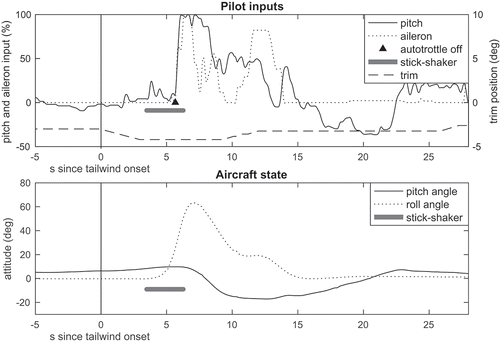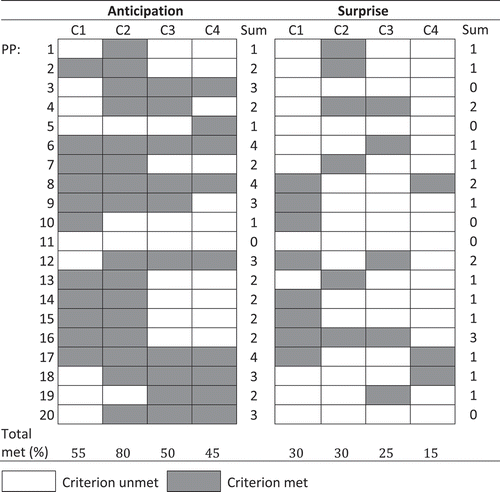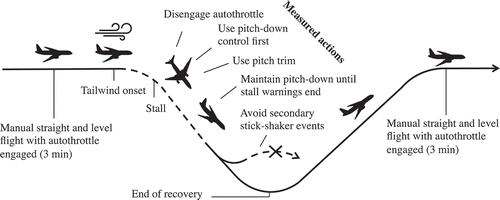Figures & data
Figure 3. Time history of the control inputs of Participant 8 (top plot) and the aircraft’s state (bottom plot) in the surprise condition.

Table 1. Description of the four measured performance criteria, with the corresponding Federal Aviation Administration (Citation2015, p. 2) recovery template principles.
Figure 5. Bitmap of the performance criteria of each pilot. PP = participant number; C1 = disengage autothrottle early; C2 = start with pitch-down control; C3 = sufficient adjustment of loading; C4 = use pitch trim.

Table 2. Criteria met in the two conditions.
Table 3. The means and standard deviations of the flight parameters in the two conditions.
Table 4. The means and standard deviations of the subjective and physiological measures in the two conditions.



